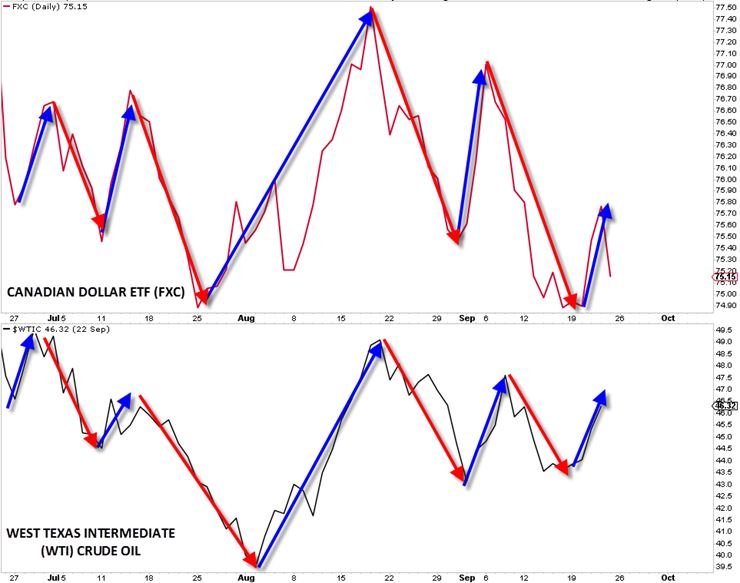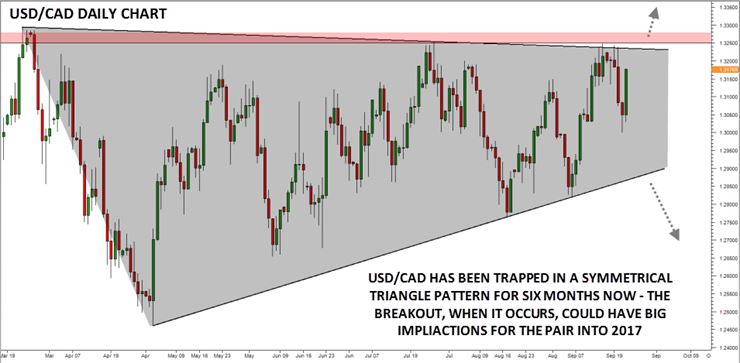The loonie is back in the news today after a run on relatively poor economic data from the Great White North. Canadian retail sales came in at -0.1% month-over-month in July, versus an expected gain of 0.2% m/m. Excluding volatile automobile purchases, sales missed by even more at -0.1% vs. 0.5% eyed. Adding insult to injury, CPI also missed expectations: consumer "inflation" was -0.2% m/m vs. +0.1% eyed. Once again, the core measure - excluding more volatile items - was similarly bad at 0.0% vs. 0.2% expected. With inflation and retail sales coming in below expectations, pressure is growing on the BOC to consider cutting interest rates.
Of course, the most important fundamental factor to watch when it comes to the Canadian economy is oil prices. The price of "black gold" rallied through midweek before falling precipitously late in the day on Friday. As we go to press, West Texas Intermediate (WTI) is on track to close the week essentially unchanged in the mid-44.00s. The chart below highlights the tight relationship between the loonie (FXC) and WTI crude oil (continuous contract) over the last three months:

Turning our attention to the North American currency pairing, USD/CAD started the year in a consistent downtrend, but for the past six months or so, rates have been consolidating in a tight range between about 1.26 and 1.33. As the chart below shows, this range has formed a big symmetrical triangle pattern:

It's notoriously difficult to predict the direction of a triangle breakout in advance, but they do tend to result in persistent trends once they do break. We'll be keeping a close eye on this pattern in the days to come; after all, a breakout from a half-year pattern could have implications for USD/CAD well into 2017.
